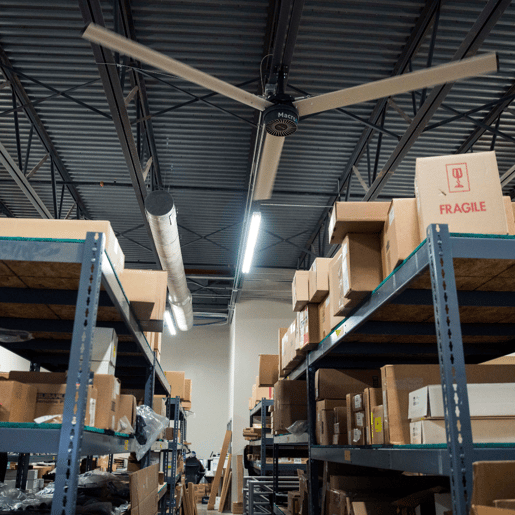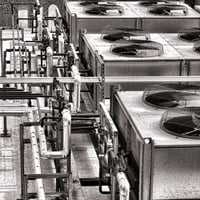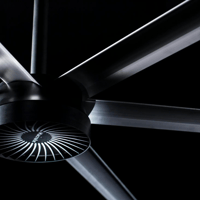Moving air efficiently with HVAC systems can be a significant challenge in today’s industrial...
How HVLS Fans Reduce Summer Cooling Expenses
You need to keep your building and employees cool, comfortable, and productive, especially during the long summer months. But cooling a large space can be prohibitively expensive for many companies. You either don’t have an existing HVAC system or the one you do have needs some help. The good news is that cooling your building does not need to be expensive. Studies by mechanical efficiency experts show that HVLS fans are the most energy-efficient air circulating fans available.
ASHRAE, the American Society of Heating, Refrigeration and Air Conditioning Engineers, has done calculations that show cost savings of up to 49% after installing HVLS fans. A number of independent studies also conclude that a few HVLS fans were as effective as12high-speed fans while providing an 86% reduction in electrical consumption.
HVLS fans reduce costs AND reduce electrical consumption. It’s a win-win.

So how does it work?
- HVLS fans move a tremendous amount of air, but they do it slowly and incredibly efficiently. The largest HVLS fans are 24 feet in diameter and have six aerodynamically designed extruded anodized aluminum blades.
- Powered by 1.5 to 2HP quiet electrical motors, these slow-moving blades create a continuously moving massive air column directed toward the floor. This gently moving column then moves outward along the floor, about six feet high in all directions, mixing, circulating, and cooling, like a fresh gentle breeze. Local, smaller, high-speed fans simply cannot provide this large-scale comfort.
- One HVLS fan, by itself, can cool about 20,000 sq. ft. of building space. HVLS fans used in combination with an existing HVAC system can allow you to turn your air conditioning set point up between 10 to 15 degrees and get the same cooling effect, yet reduce energy costs by about 20%.

As a stand-alone cooling system, or in conjunction with an existing HVAC system, MacroAir HVLS fans provide an efficient, cost-effective solution to cooling many building types – manufacturing, warehousing, commercial, and showrooms. Better cooling with more cost and energy savings.

